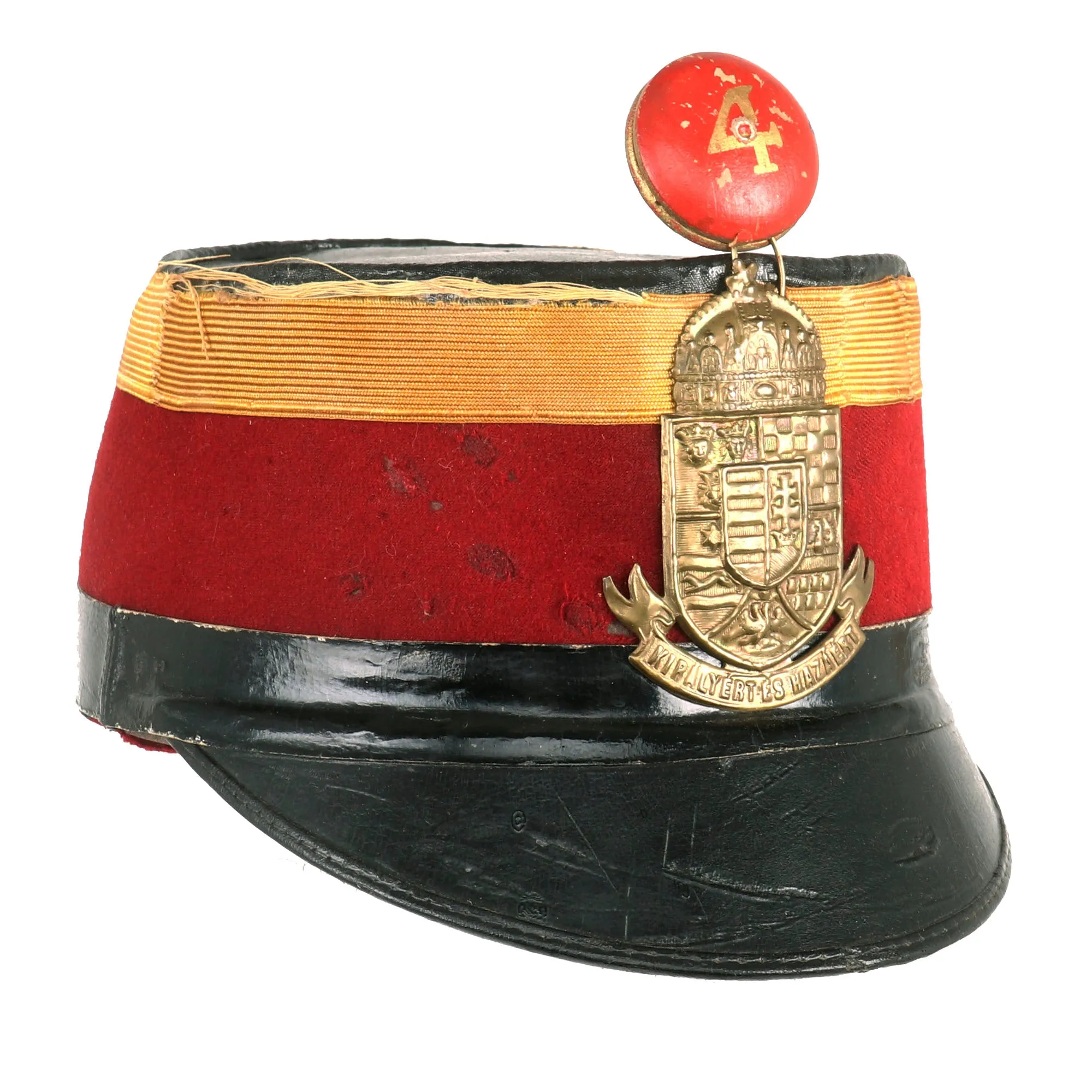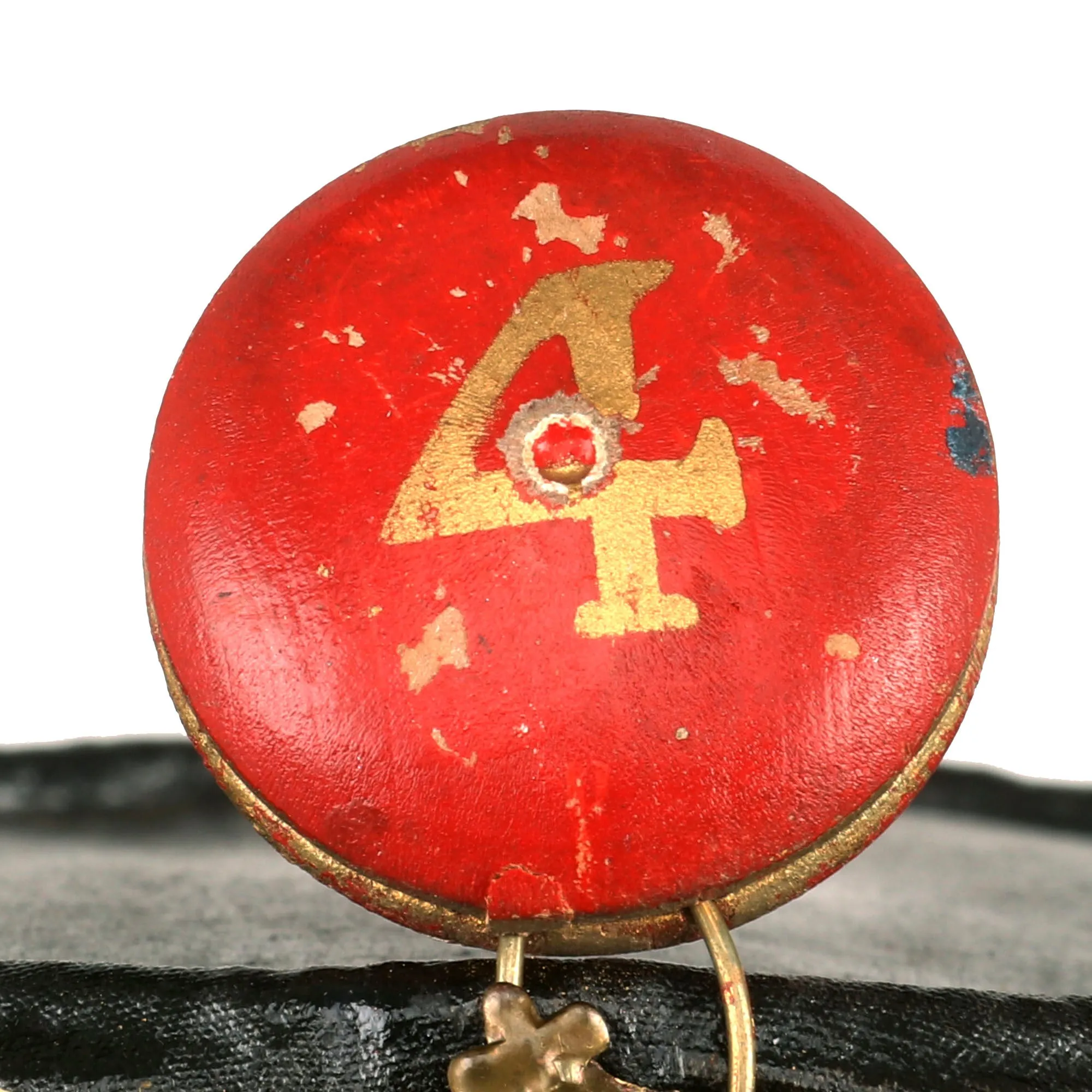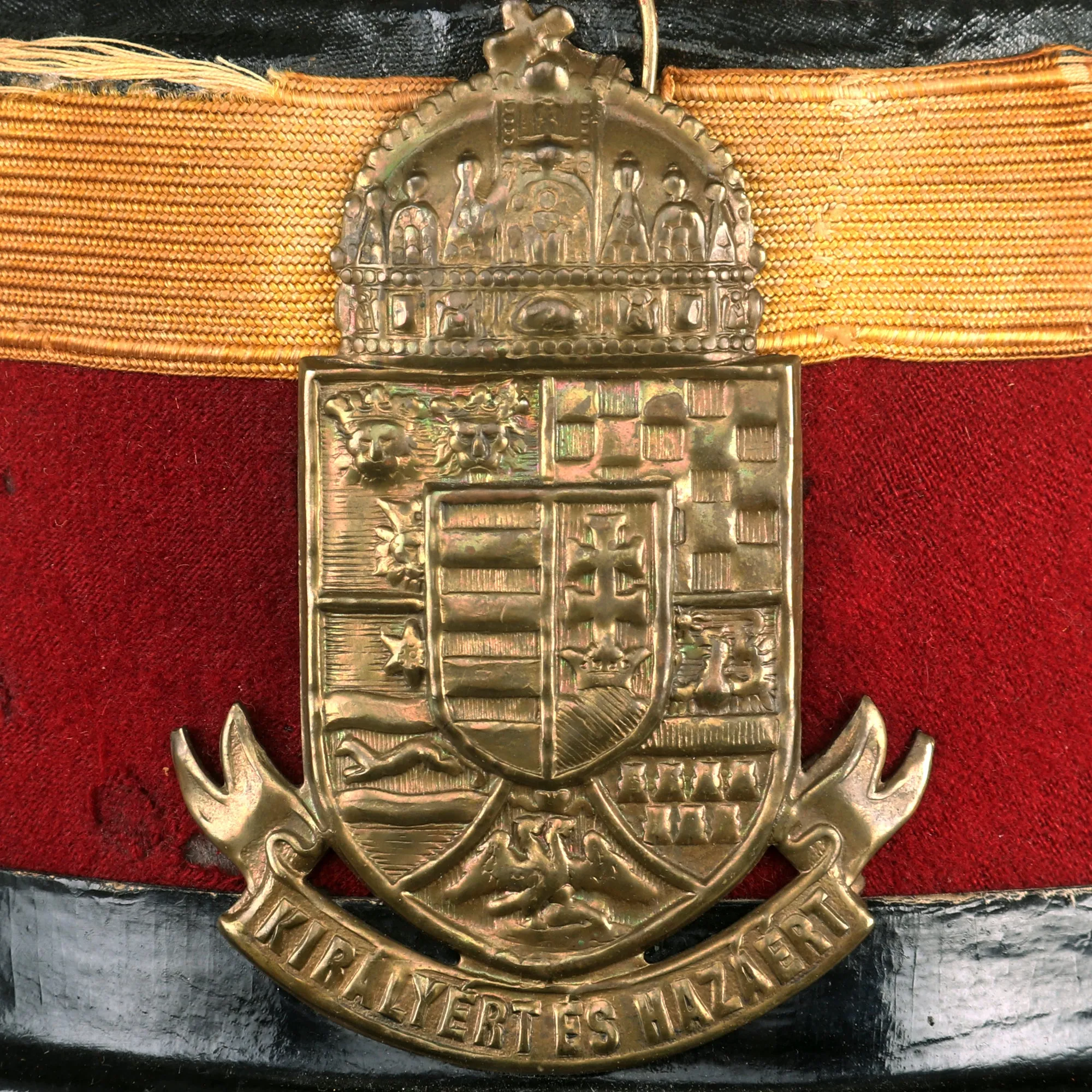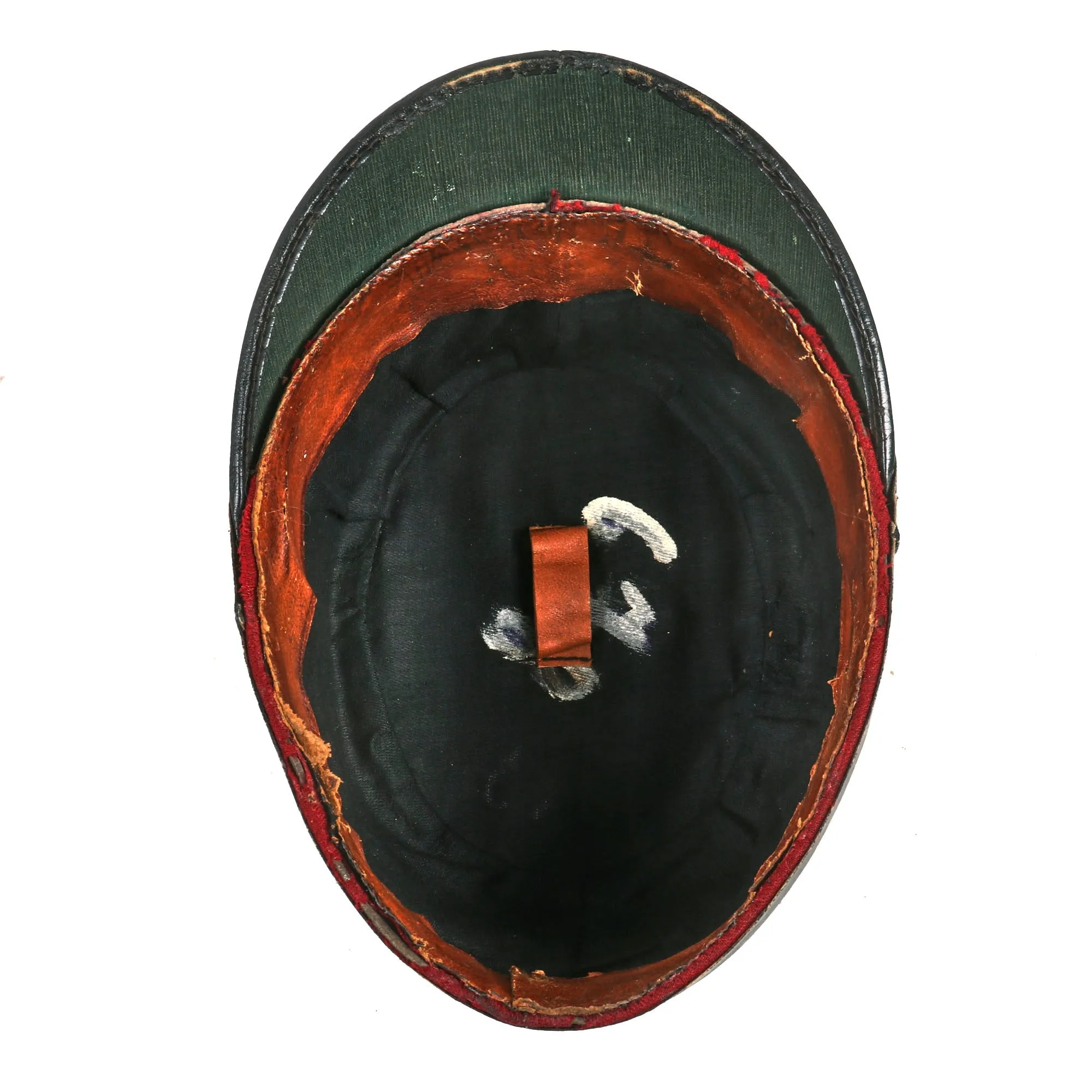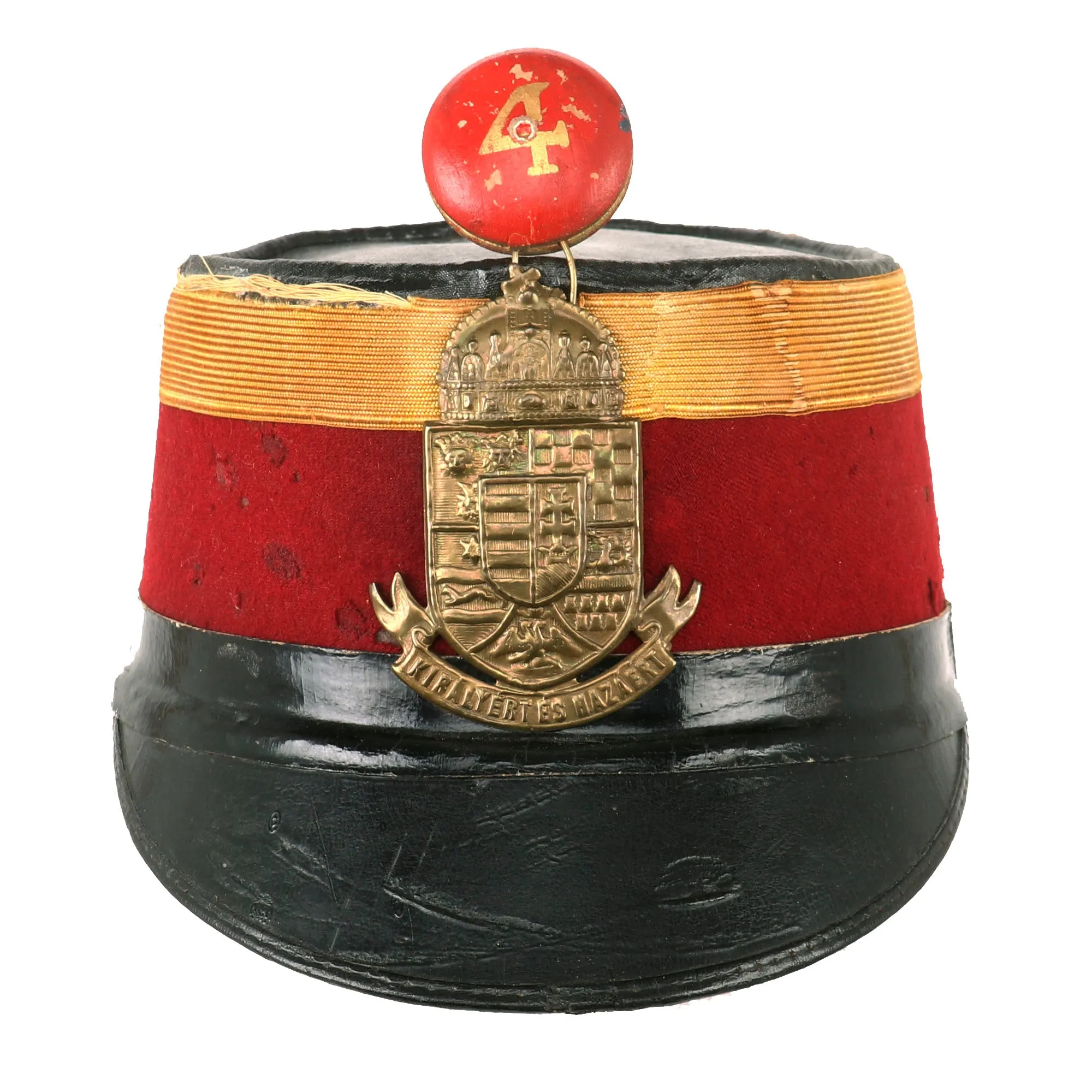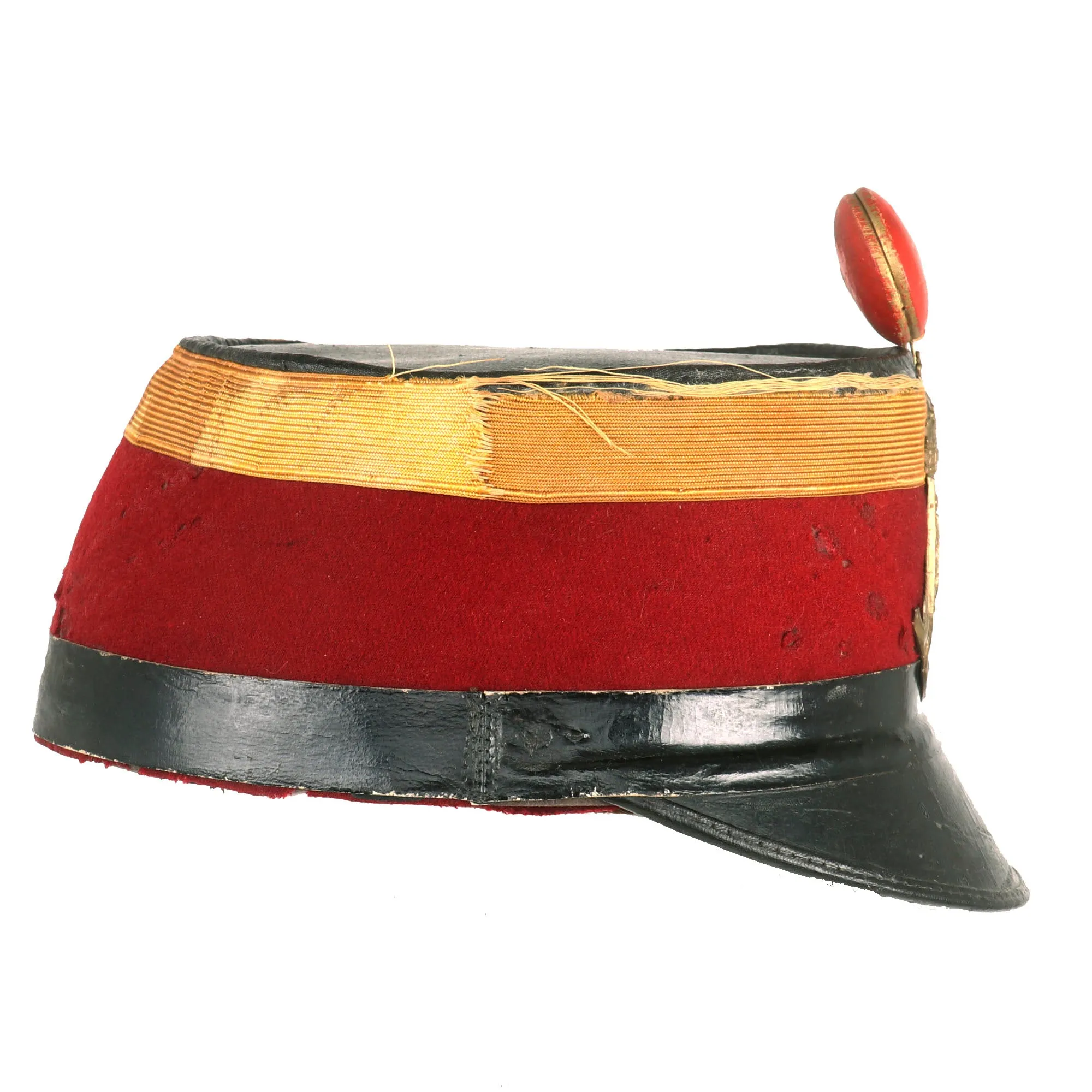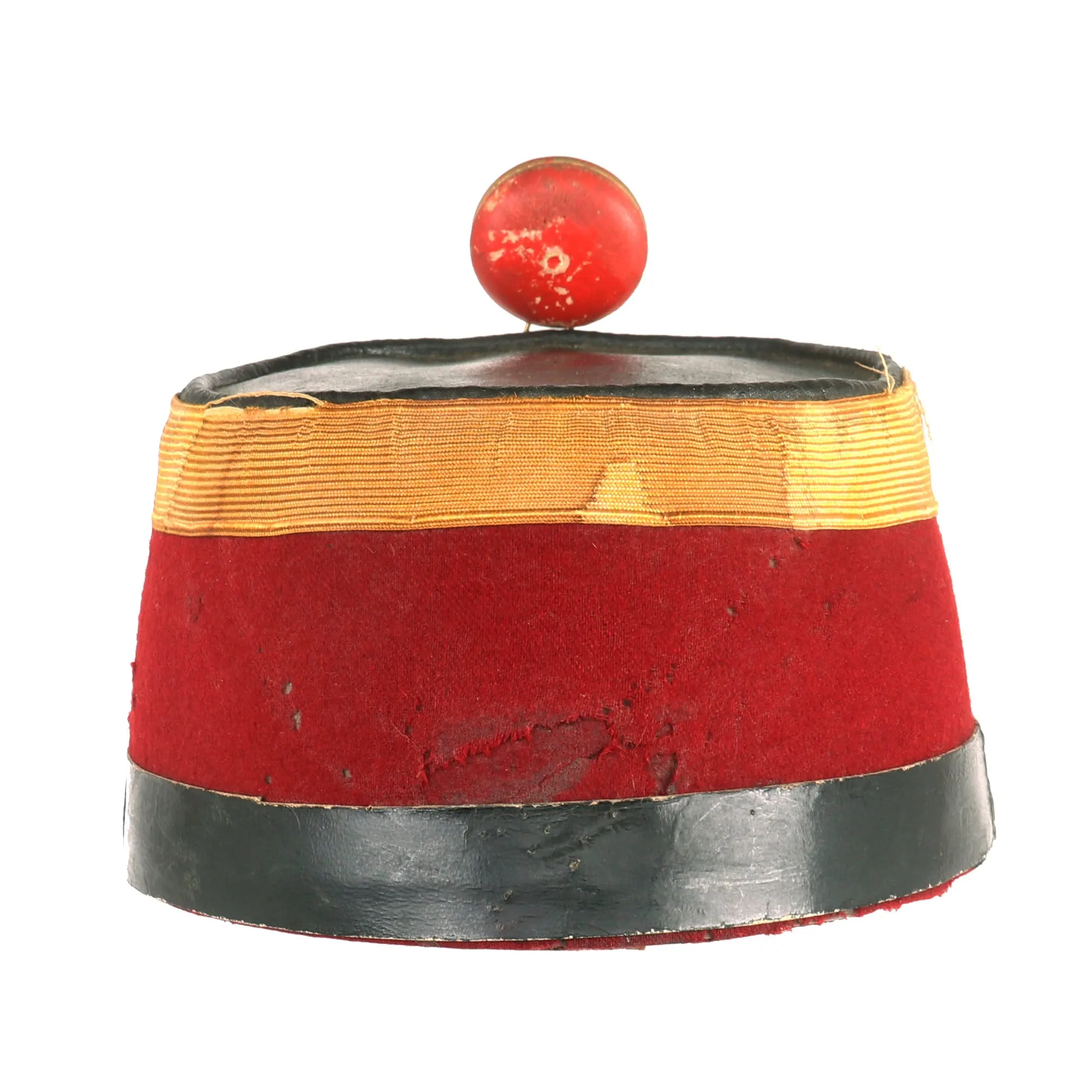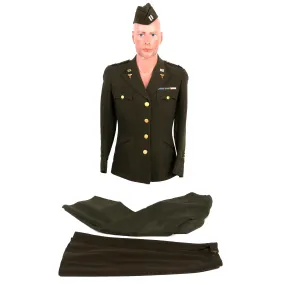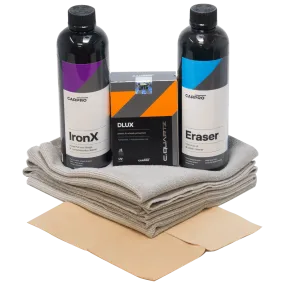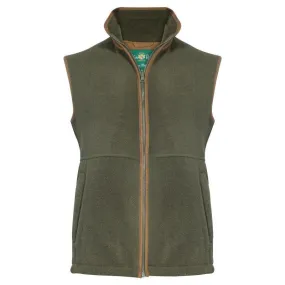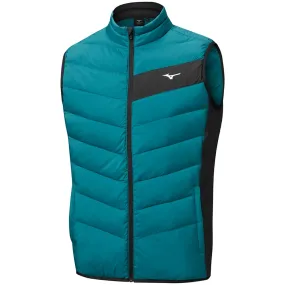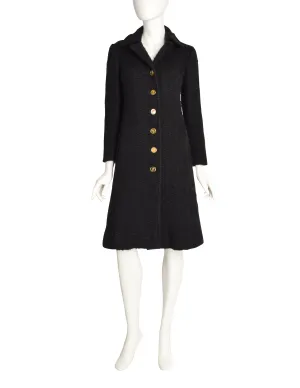Original Item: Only One Available. This is a beautiful Royal Hungarian Army Enlisted Shako, which dates back to the Pre-WWII period, after Hungary gained independence from Austria. The design of the shako is rather standard, featuring a large front plate that bears the coat of arms of the Kingdom of Hungary. Below the coat of arms is a banner that reads "KIRÁLYÉRT ÉS HAZÁÉRT", which means "For King and Country" in Hungarian. This is the motto of the Royal Hungarian Army.
The shako appears to be primarily made of fabric and pressed paper. The exterior is made of red wool felt, which has a beautiful color, but there are scattered moth nips that expose the inner structure of the design. The bottom trim of the helmet, however, is made of real leather, as would the missing chinstrap would have been. The interior lining is made of lovely black cotton with a white painted number that reads 678. It is unclear what this marking is, as we have had examples in the past with the same number.
Very decorative, and ready to display!
The word honvéd in Hungarian means "defender of the homeland" and first appeared during the 1848 revolutions. At that time it was the name given to volunteers who were engaged for several weeks or a gyözelemig (i.e. "until victory") and sent to fight the Serbs and Croats. Subsequently, the bulk of the fighting was against the Empire of Austria, whereupon a number of regular imperial regiments went over to the Hungarian side. Some volunteers were attached to these existing regiments and some joined new regular regiments. Consequently, the term honvéd was used to refer to all members of the Hungarian land forces in 1848-49. The Honvéd was finally defeated by Austria with Russian assistance.
Following the Austro-Hungarian Compromise of 1867, the Royal Hungarian Honvéd was restored for Hungary, and the Imperial-Royal Landwehr was created for Austria, but both states had to continue to finance the Austro-Hungarian Common Army, much larger than both. A common Austro-Hungarian War Ministry was formed immediately for the large Common Army, but it had no right to directly command the smaller Austrian Landwehr and the Hungarian Honvéd armies, which were respectively placed under the direct control of the separate Austrian and Hungarian Ministries of Defence. The Austrian and Hungarian Ministers of Defence were not placed under the command and jurisdiction of the Common War Ministry; they were subordinated only to their own prime ministers and the respective parliaments in Vienna and Budapest. The Hungarian Honvéd army could join the imperial army only with the explicit authorization of the Hungarian government.
The monarch became the supreme warlord, holding all authority over the structure, organization, and administration of the army. He appointed the senior officials, had the right to declare war, and was the commander-in-chief of the army.
On 21 May 1893 the Honvéd Memorial was unveiled in Budapest in commemoration of the deeds of the Hungarian national army during the Hungarian Revolution of 1848-49. From 1919 to 1945, Honvédség was also a name given to the Royal Hungarian Army.





